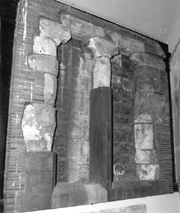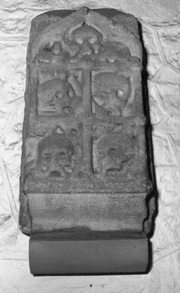 |
 |
 |
 |
 |
 |
 |
|
|
Cistercian Abbeys: STRATFORD LANGTHORNE Name: STRATFORD LANGTHORNE Location:
London County: Greater London Stratford Langthorne, or Stratford, was founded in 1135 by William de Montfichet, and, like Coggeshall, was a daughter-house of the abbey of Savigny in Normandy. Like all the other houses of the Savigniac Order, Stratford Langthorne was absorbed into the Cistercian Order in 1147. It is thought that the original site was at Burstead, and that the house moved to its present site c. 1140. The house quickly acquired great wealth and, owing to its proximity to London, became one of the most important Cistercian houses in England. Stratford’s property included almost a score of manors and some 1500 acres of demesne in West Ham alone. Given its location, Stratford was burdened by visitors from the Cistercian Order and sought relief from the General Chapter. Accordingly, in 1218 the General Chapter ruled that no Cistercian monks or conversi (lay-brothers) visiting London should stay more than three days at the house; in 1219 the General Chapter stipulated that members of the Order who were in London on litigation or for business should stay for only three days out of every fortnight; those who remained longer were to provide their own ale, wine and hay and oats for their horses. In 1267 Henry III received the pope’s legate
at Stratford Abbey and made peace with the barons there. During
the Peasants Revolt of 1381 the abbey was amongst the religious
houses targeted by the insurgents; its goods were stolen and its
charters
burned. In the late fourteenth century the abbey was damaged by
flood and Richard II took it upon himself to restore the buildings.
At the time of Dissolution the net annual income of the abbey was
valued at £511 and the house was suppressed with the larger
monasteries in 1538. Following the Dissolution the site was granted
to Sir Peter Mewtas who let the buildings fall into ruin. By the
end of the eighteenth century, all traces of the abbey had disappeared,
including the foundations which had been dug out by Thomas Holbrook
to be used for building stone. By the early twentieth century the
site had disappeared beneath railway sidings, a sewage works and
small factory buildings.
|

